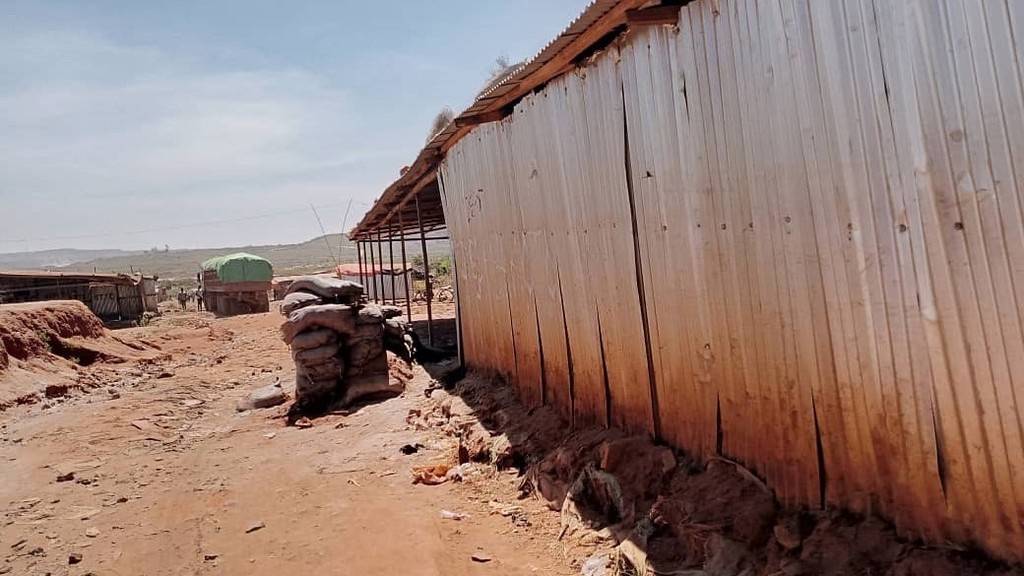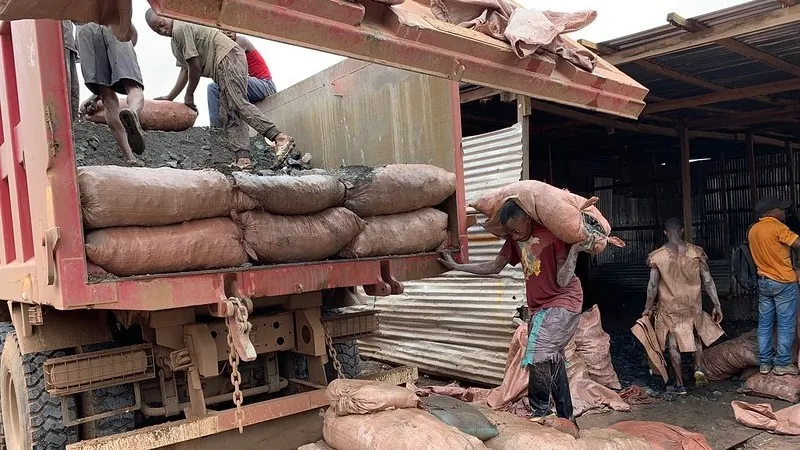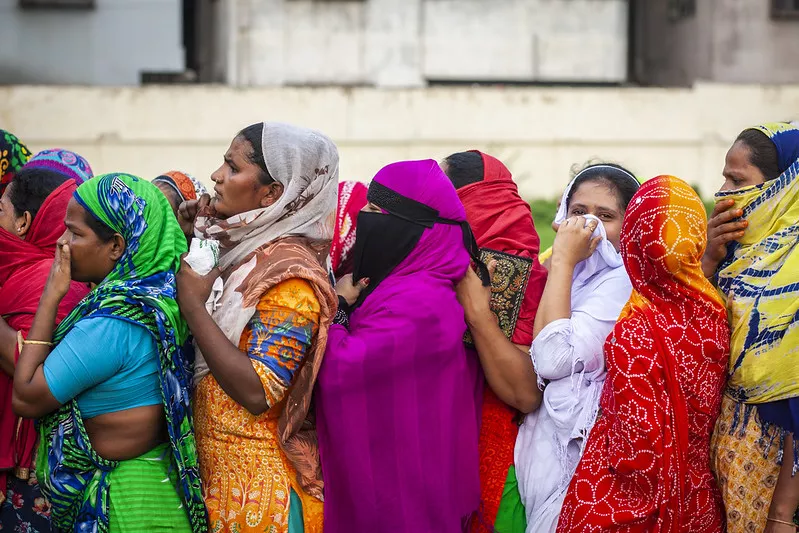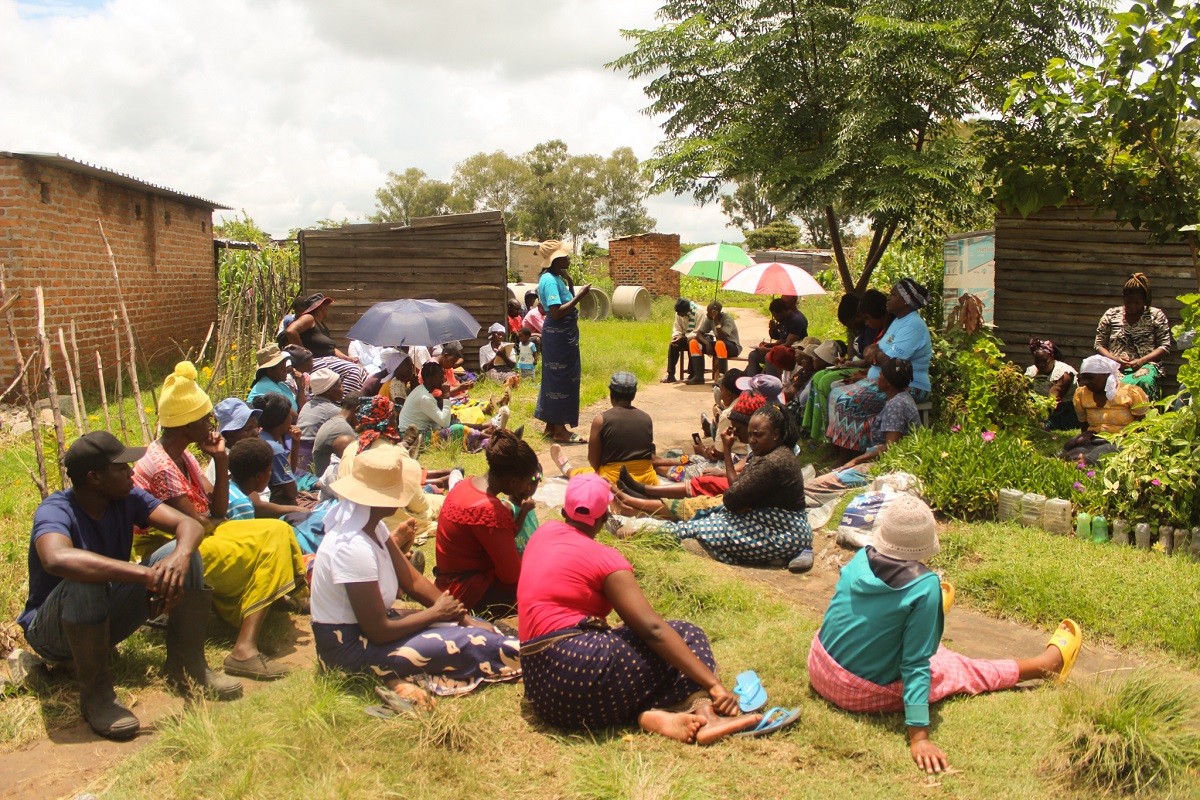As a critical component in batteries used for electric vehicles, demand for cobalt continues to surge. The Democratic Republic of Congo (DRC) has the world’s largest reserves of cobalt and a big chunk of total cobalt production − around 10-30% − comes from the artisanal sector.
But grave problems embroil the sector, including worker exploitation, child labour and toxic pollution.
Cobalt extraction causes huge social and environmental damage. Waste from mines pollutes water, air and soil while dust from mechanical excavation, or from digging or breaking rocks by hand, can contain toxic metals including uranium which is linked to respiratory disorders and birth defects.
In mines in southern DRC, an estimated 40,000 children work in life-threatening conditions while being exposed to violence, extortion and intimidation.
The Congolese government has committed to address the sector’s governance problems by introducing policy and legal frameworks.
Efforts to regulate
In 2019, as part of this promise for reform, the government announced the creation of two state-owned entities – the General Cobalt Company (EGC) and the Authority for the Regulation and Control of Strategic Mineral Substances Markets (ARECOMS).
The government granted EGC a monopoly to buy, process and market all artisanal cobalt produced in the DRC. It is responsible for ensuring that the production of all artisanal cobalt meets high standards of social and environmental responsibility, and for traceability so the cobalt can be tracked from mine to consumer.
ARECOMS is the industry watchdog. It regulates and controls production and export of ‘strategic minerals’ – minerals deemed essential to the country’s economic and national security. ARECOMS’ remit is to ensure the strategic minerals market is attractive and remains stable, and that any companies under its control are not engaged in money laundering or financing terrorism.
Together, these two bodies are responsible for driving a future of fair and responsible artisanal cobalt in DRC.
Monitoring progress
In a 2021 report, IIED and partner Africa Resources Watch (AFREWATCH) took stock of the key areas that the government needed to address to formalise the artisanal cobalt sector.
Two years on, AFREWATCH carried out a seven-month investigation into whether, or how far, the report’s recommendations had been implemented.
Here are three top findings from the investigation:
-
EGC falling short: little to no progress on special artisanal mining zones
One of the EGC’s key tasks is to ensure the viability of special artisanal mining zones or ZEAs (zones d’exploitation minière artisanale).
ZEAs are geographical areas marked out by the government’s Ministry of Mines. ZEAs should be allocated to the EGC, which is then responsible to make these areas safe for artisanal miners and offer well-regulated access to cobalt reserves.
This includes installing equipment to facilitate the work of artisanal miners and providing protective equipment to reduce the risk of accidents. The EGC is also responsible for centralising production of artisanal cobalt and for marketing the product. The monopoly granted to the EGC supported this role.
But progress has been slow. While the government earmarked a total of 84 areas to be ZEAs only the Kasulo mining site (website in French) has been handed over to the EGC. Unless the Ministry of Mines allocates these areas to the EGC it cannot progress in making ZEAs viable.
The EGC’s struggles are further compounded by the government’s recent decision to retract the monopoly it entrusted to the EGC. In May 2022, DRC’s minister of mining Antoinette N’samba Kalambayi declared the monopoly constituted a “violation of the laws of the republic”.
-
Clandestine comptoir d’achat de minerais are back on the scene
These illegal mineral trading counters threaten the environment and people’s health. Impacts include surface water and soil pollution, and an upsurge in respiratory illnesses. The proliferation of these illegal counters means the government cannot trace artisanal mining products, and it consequently loses a significant proportion of revenue generated in this sector.
In August 2016, the provincial government of Lualaba instructed the closure of all illegal mineral trading counters. This met with resistance and trading simply continued. Finally, in 2019, closures were enforced by the military.
But as AFREWATCH reports, these trading counters are back in the district of Kolwezi dubbed DRC’s ‘cobalt capital’, and along the road linking Kolwezi and Likasi – part of the same mining region.

Comptoir d’achat de minerais − perhaps most easily translated as ‘mineral trading counters’ − are where artisanal mining products are bought and sold. Under DRC’s 2018 Mining Code, the opening of these counters must be authorised by the Minister of Mines. Yet many of these counters operate illegally, without authorisation. The counters are typically built from temporary materials with minerals set out on a simple wooden table or even on the floor. They are generally found in mining villages and along roads linking mining villages to other towns. It is not uncommon for counters to be set up inside or next to people’s homes.
-
Lack of transparency persists
The global standard of the Extractive Industries Transparency Initiative (EITI) is designed to support good governance of oil, gas and mineral resources.
As of 1 January 2021, under requirement 2.4 of the 2019 EITI standard (PDF) member countries must disclose all contracts signed and licenses granted, relating to extractives.
These standards ensure citizens have access to information and can monitor extractive companies’ contractual commitments. They can hold their governments to account if contracts have been poorly negotiated.
As a member of EITI since 2005 (website in French), the DRC is obliged to comply with EITI’s requirements by publishing all contracts signed for the exploitation and management of its mineral resources.
Despite these commitments, many contracts remain undisclosed. One example is the contract between the provincial government of Lualaba and the Sud South company. This contract is the first of its kind and involves one of the largest cobalt mining districts in the DRC. Compliance with the EITI’s disclosure requirements could have set a precedent for similar contracts into the future, but this contract has not been made public.
Cobalt’s moment is now
More than half the world’s cobalt is produced for batteries. But a single industry acquiring such a large proportion of the mineral makes the cobalt mining sector highly vulnerable to shifts in demand.
For example, if manufacturers of batteries for electric vehicles were to abandon the use of lithium-nickel-manganese-cobalt (NMC) batteries in favour of other types of battery, cobalt consumption could fall considerably.
There are no immediate signs of any market shifts – but soaring demands for cobalt may not last forever.
If the DRC government wants to ensure that the nearly 46,000 artisanal miners in the cobalt sector benefit from the current cobalt boom, it must put into practice the commitments it has set itself for regulating the artisanal cobalt sector.
This blog was first published on the IIED website and the AFTERWATCH website.


